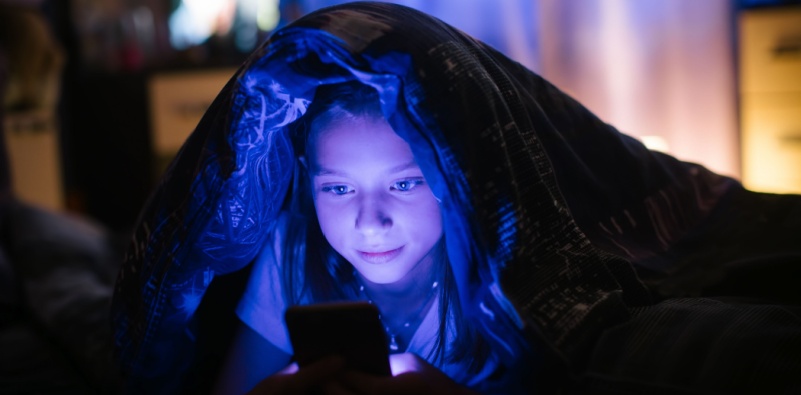What does near-sightedness look like in children?
Myopia, also known as near-sightedness, is becoming more common in children. We want to raise awareness about this vision correction issue so that you, as parents, teachers, and guardians, can recognize the symptoms and understand how to treat it.
What is near-sightedness?

Near-sightedness causes close-up objects to look clear, but distant objects appear blurry. The medical term for this condition is myopia, and it currently affects around 30% of the world’s population.
Myopia is caused by a curvature of the cornea or elongation of the eyeball, meaning that light rays focus in front of the retina at the back of the eye instead of directly on it. It typically develops in childhood, so it’s important to look out for possible signs as early on as possible so it can be treated.
Recognizing myopia in children

You might be wondering, ‘What does near-sightedness look like?’ Children, a lot of the time, will depend on the adults around to notice any changes in their vision. This is because when they are young, they often don’t realize that anything is wrong themselves and assume what they are seeing is normal, so they may not speak up.
Here are signs you can watch out for:
- squinting or blinking a lot
- tilting their head to see
- headaches
- difficulty reading at a distance, such as a whiteboard at school
- sitting close to the TV or holding reading materials close to their face
- rubbing their eyes excessively
If you notice any of these signs in your child, it’s best to book them in for a comprehensive eye exam so we can check their vision and eye health
What are the risk factors?

Researchers have recently conducted a study of myopia prevalence around the world and found that it is increasing. This is partly genetic, as the risk of developing myopia is 3 times higher in children with myopic parents.
Other risk factors for near-sightedness include spending prolonged amounts of time doing close-up work, such as looking at a computer screen, tablet, smartphone, or book. Children’s eyes need to become accustomed to different focal distances, so spending long hours focusing only on something close-up can be detrimental to their vision.
In fact, studies conducted on how to prevent nearsightedness show that spending at least 2 hours a day outdoors can reduce the risk of developing myopia and help slow its progression.
The importance of eye exams

Early detection and management are the best defenses against myopia. Untreated nearsightedness may not seem like a big deal, but it can lead to high myopia later in life, which increases the risk of developing more serious eye diseases and conditions, such as glaucoma, retinal detachment, and cataracts.
By noticing the signs of nearsightedness early on and bringing your child for an eye exam, you can help to protect their vision and improve their overall wellbeing hugely. We strongly recommend scheduling regular eye exams after their first one so that we can keep a close eye on their vision and eye health as they grow older.
Book your child in for an eye exam today
Dr. Jason Kvitle, our optometrist in Quincy, IL, offers thorough pediatric eye exams. All our young patients are treated with the same personalized care as adults, and Dr. Kvitle will endeavor to make sure they are completely comfortable and relaxed before the examination begins. The eye exam can also be adapted if they aren’t able to read letters yet.
Protect your child from myopia and give them a brighter future – book their eye exam today for peace of mind.
 1107 College Ave Quincy, IL 62301
1107 College Ave Quincy, IL 62301


